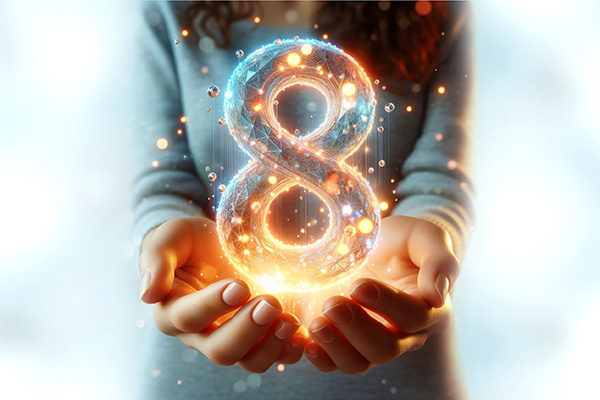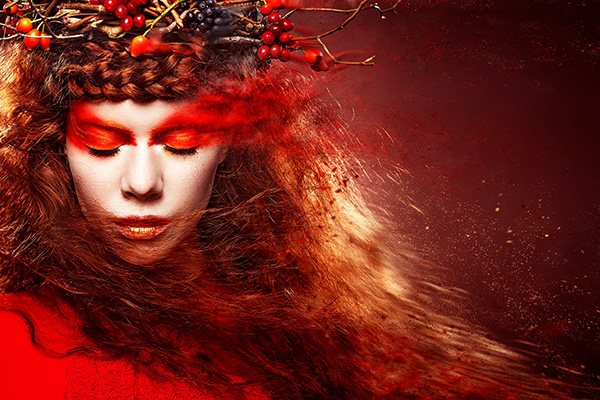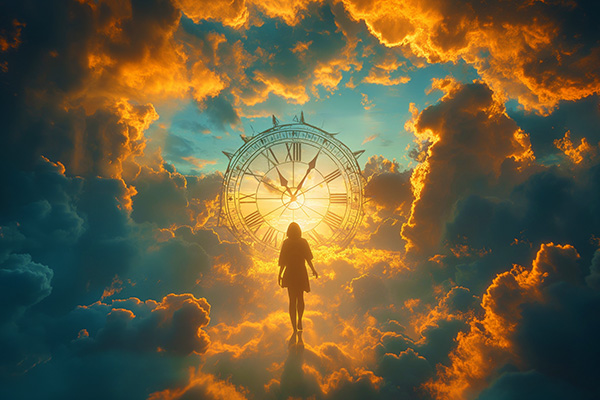symbolism
The Spiritual Significance Of A September Cleaning
 Did you know that cleaning can be so much more than a boring chore? When done mindfully and with intention, it can become a transformative ritual that aligns our physical environment and the spaces in which we live and work with higher spiritual energies.
Did you know that cleaning can be so much more than a boring chore? When done mindfully and with intention, it can become a transformative ritual that aligns our physical environment and the spaces in which we live and work with higher spiritual energies.
By clearing away dirt, clutter, and disorder as a form of mindful meditation and cleansing ritual, you can also cleanse your inner being, releasing what no longer serves you and making room for new energies to flow. The act of cleansing can then serve as a bridge between the physical and spiritual realms, allowing the harmonious flow of life force energy, or chi, through your physical environment.
Everything in the universe is interconnected, including the spaces we inhabit. Metaphysically, our homes and workplaces are extensions of our own energy field. When these spaces are cluttered or dirty, they begin to affect or even block the flow of positive energy, leading to feelings of lethargy, confusion, and spiritual stagnation. More importantly, negative energy imprints and residues tend to accumulate in our homes through our interactions with other people and the outside world. Cleansing thus becomes an essential spiritual practice, similar to meditation or prayer, that helps restore balance, flow and harmony.
The physical act of cleaning is not only about maintaining order and hygiene in our surroundings, but also about aligning our internal energies and preparing our minds for deeper spiritual engagement. It’s like meditation, but with a broom and a mop!
By systematically organizing and cleaning, we can practice mindfulness and focus on the present moment and the task at hand. As unnecessary items are discarded and surfaces are cleaned, we experience a corresponding release of old emotions and thought patterns that no longer serve us. In this way, the simple act of wiping down a shelf or sweeping a floor can become a profound spiritual practice that connects us to the sacredness of the present moment.
The Empowering Eight Energy Of September 2024
 As this month unfolds, we find ourselves in a powerful and transformative period in terms of numerology.
As this month unfolds, we find ourselves in a powerful and transformative period in terms of numerology.
September 2024 carries the dynamic energy of the number 8, which resonates strongly with the overall vibration of the year, as this is a year of the number 8.
In numerology, each month is assigned a number based on its position in the calendar year. September is the 9th month of the year, so the number for September is 9.
To find the numerological number for a year, you add up each digit of the year until you reduce it to a single digit. So the number for 2024 is 8.
2024 → 2 + 0 + 2 + 4 = 8
To find the combined energy for a particular month within a particular year, add the number of the month to the number of the year and reduce the sum to a single digit (if necessary).
9 (September) + 8 (year 2024) = 17
Reduce 17 to a single digit: 1 + 7 = 8
Thus, September 2024 carries the dynamic combined energy of the number 8. This creates a powerful alignment that amplifies the qualities of the number 8 this month with significant opportunities to achieve personal growth, balance and abundance.
How To Deal With Spirit Presence In Your Home
 Spirit energies are around us all the time in all shapes and forms. Many people have experienced, or at least know someone who has, a spirit presence or paranormal activity in their home.
Spirit energies are around us all the time in all shapes and forms. Many people have experienced, or at least know someone who has, a spirit presence or paranormal activity in their home.
These encounters can range from subtle to intense, and the nature of the experience often varies greatly depending on the person’s beliefs, fears, and openness to the supernatural.
For some, the presence of a spirit is a source of terror, while for others it is a comfort, like being in the presence of an old friend. Then there are those who scoff and laugh at the very idea that a ghost could exist.
These varied responses highlight an important question: why do people have such different experiences with spirits?
In my experience, it depends on two main factors: a person’s beliefs and attitudes about spirituality and the supernatural, and the nature of the spirit presence itself, whether it is benevolent or malevolent.
My grandmother came to me within three days of her death to tell me she was okay. She gave me a sense of peace and I didn’t see her again. Years later, my mother also came to me to tell me that she was okay and that all was well where she was. It was also a one-time visit.
But with my stepson, who committed suicide, and my father, it was different. He started showing up at his former house (he had left a wife and two beautiful boys) on a regular basis. He would turn on the lights or the faucet. In the middle of the night she would hear our grandchildren talking and giggling in one of their rooms. They were only two and three years old when he died. She went to investigate, thinking they were up to no good, but only one of them was in the room. When she asked who he was talking to, her boy said, “Daddy was here.”
The Spiritual Significance Of Colors
 Color permeates our very existence, profoundly affecting our homes, our work environments, the food we eat and the clothes we wear.
Color permeates our very existence, profoundly affecting our homes, our work environments, the food we eat and the clothes we wear.
In every facet of our lives, color exerts a significant influence, shaping our moods, behaviors, and spiritual well-being.
In Kundalini Yoga, for example, teachers traditionally wear white outfits made of natural fibers, along with a white head covering. This custom is not just for practical or aesthetic reasons.
Just as the color white deflects the sun’s rays while black absorbs them, white also deflects negative energy while black attracts and absorbs it.
This practice thus serves a dual purpose: it symbolizes the purity and spiritual clarity that the teacher exemplifies, and it also protects the teacher from negative energy that may emanate from his or her students.
Kundalini Yoga can attract a wide range of students, from those who are highly developed spiritually to those who struggle with emotional instability. The white attire acts as a shield against negative energy that may be projected or “dumped” on the teacher.
In particular, the head covering protects the seventh chakra, which is located at the top of the head. This chakra is essentially our ‘spiritual umbilical cord’ that connects us to God, Source, Spirit, the Divine, so its protection is crucial.
Invoking The Power And Beauty Of Freya
 The goddess Freya has a special place in my spiritual self-care routine. I often turn to her when I need extra guidance and support.
The goddess Freya has a special place in my spiritual self-care routine. I often turn to her when I need extra guidance and support.
Freya is the ancient Norse goddess of love, beauty, fertility, and war. She is one of the most important deities in Norse mythology, embodying the ultimate ancient archetype for ‘girl power’ and ‘boss lady’ energy.
She is traditionally revered for her deep wisdom, boundless compassion, and fierce protection. Invoking her divine feminine power has brought much transformative and empowering energy to many aspects of my life.
In Norse folklore, Freya rides a chariot drawn by two large, powerful cats and is often depicted wearing the Brísingamen necklace, a symbol of her power and beauty.
The Brísingamen was created by four dwarves known for their exceptional craftsmanship. The necklace symbolizes beauty, desire and the power of attraction. It also represents Freyja’s connection to the earth and its fertility.
Freya is the leader of the Valkyries, the warrior maidens who choose those who may die and those who may live in battle. Freyja is said to receive half of the slain warriors in her heavenly field, Fólkvangr, while the other half go to Odin’s hall, Valhalla.
This dual role highlights her authority and revered status among the gods, bridging the realms of life and death. The Valkyries, under her guidance, serve not only as fierce selectors of the fallen but also as protectors and guides for these chosen souls, ensuring their honored place in the afterlife.
Seeing The Future In Precognitive Dreams
 Many people will tell you that they’ve had a precognitive dream at some point in their lives. In short, this is a dream that somehow revealed or predicted a future event or circumstance. Literature, myth, and history are filled with stories of such dreams, from ancient times to the sinking of the Titanic.
Many people will tell you that they’ve had a precognitive dream at some point in their lives. In short, this is a dream that somehow revealed or predicted a future event or circumstance. Literature, myth, and history are filled with stories of such dreams, from ancient times to the sinking of the Titanic.
The concept of precognitive dreams has fascinated mankind for centuries. In ancient cultures, dreams were seen as messages from the gods or the universe, guiding individuals through their waking lives.
The Bible, for example, contains numerous accounts of prophetic dreams, such as Joseph’s dreams that foretold his rise to power in Egypt. These stories underscore the long-held belief that dreams can provide glimpses into the future.
But how much truth is there in the idea of dreaming the future? Is it really a thing?
Throughout history, people have reported dreams that seemed to predict future events. These precognitive dreams, as they’re called, have included personal tragedies, world-shaping conflicts, and even scientific breakthroughs.
Carl Jung, a prominent Swiss psychiatrist and psychoanalyst, was interested in the phenomenon of precognition in dreams. He believed that dreams could sometimes contain elements of future events or insights that were not consciously available to the dreamer. Jung coined the term “synchronicity” to describe meaningful coincidences that defy conventional explanations of cause and effect, suggesting a deeper connection between the psyche and external events.
